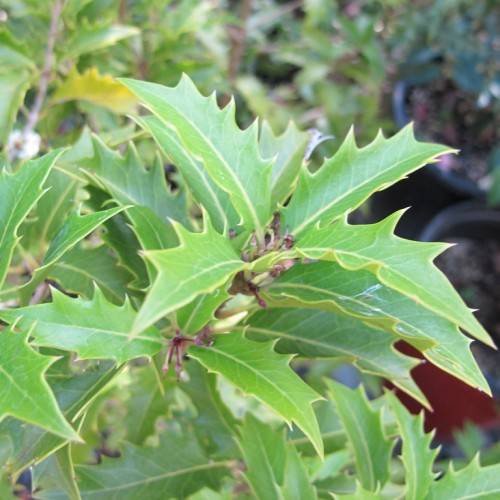
devilwood
Osmanthus armatus
Cycle:
Perennial
Watering:
Average
Hardiness Zone:
7 - 9
Flowers:
Flowers
Sun:
Full sun,part shade
Leaf:
Yes
Growth Rate:
Low
Maintenance:
Moderate
Drought Tolerant:
Yes
Salt Tolerant:
Yes
Care Level:
Medium
watering
Devilwood (Osmanthus armatus) should be watered thoroughly but not too frequently. Water every 5-7 days, allowing the soil to dry out a bit before watering again. During the hot summer months, you may need to water a bit more often. During the cooler months, water more sparingly as the cold temperatures can cause damage to the plant's roots. If soil is kept too moist, it may cause root rot, so ensure that there is a proper balance between soil moisture and drainage. To check if the plant needs to be watered, push your finger into the soil or use a moisture meter to see if the soil is dry. Also, avoid watering the leaves directly to prevent fungal diseases. Lastly, fertilize the devilwood about once every 2 months with a water-soluble fertilizer to keep it healthy and growing.
sunlight
Devilwood is a sun-loving plant species that thrives in at least 6 to 8 hours of direct sunlight each day. For optimal growth and flowering, it is best to provide the plant with full sun, especially during the morning hours when the temperature and light intensity are both at their highest. Additional or filtered midday sun can also be beneficial, but midday shade may be necessary during the warmest months of summer. Additionally, devilwood should be planted in a location that receives morning and afternoon sun, both in order to maximize flowering and to help the plant develop leaves that are more densely packed.
pruning
Devilwood should be pruned in late spring or early summer, after it has finished blooming or growing for the season. Prune devilwood to shape and maintain a desirable size and form. Remove unproductive, dead, diseased, and overly overcrowded branches, as well as any branches that rub against each other. Be sure to prune the shrub judiciously so as not to remove more than 1/3 of the plant in a single year. Pruning back to the point of origin is best if leaves are small or sparse. Otherwise, try to preserve the natural form of the plant by pruning outer growth and thinning from the inside.
